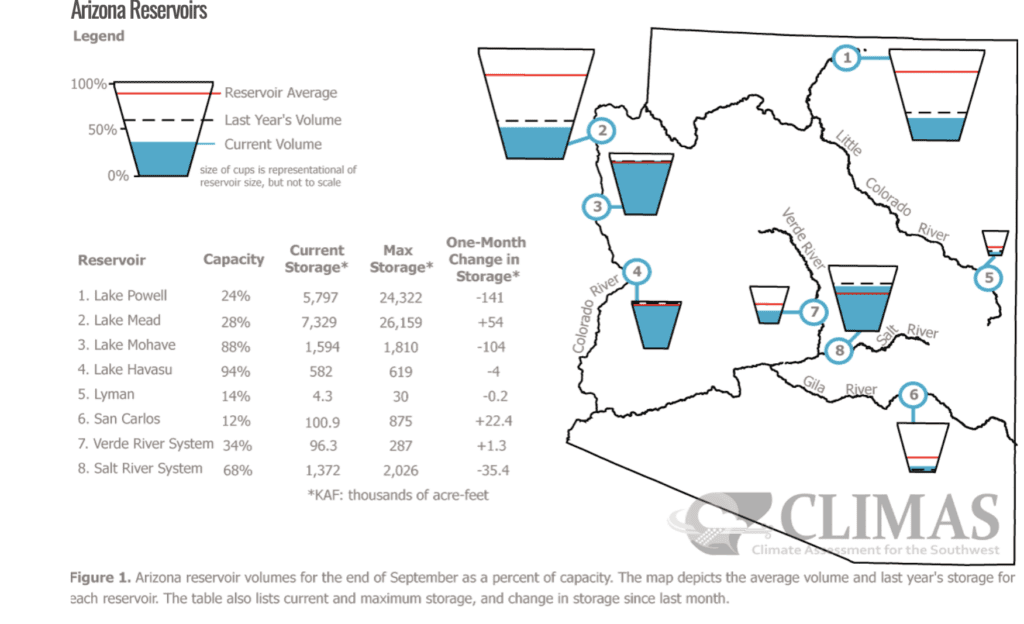Daniel Salzler No. 1173 EnviroInsight.org Six Items October 28, 2022
—————Feel Free To Pass This Along To Others——————
If your watershed is doing something you would like others to know about, or you know
of something others can benefit from, let me know and I will place it in this Information newsletter.
If you want to be removed from the distribution list, please let me know.
Please note that all meetings listed are open. Enhance your viewing by downloading the pdf file to view photos, etc. The
attached is all about improving life in the watershed. If you want to be removed from
the distribution list, please let me know. Please note that all meetings listed are open.
Check our website at EnviroInsight.org
1. Can You Tell The Difference Between A Crow And A Raven? Crows and ravens can be tricky to tell apart by sight, but their voices are distinctive.

Watch the video found at https://academy.allaboutbirds.org/caw-vs-croak-inside-the-calls-of-crows-and-ravens/ for some expert tips on the calls of these two common birds. From the territorial “caw, caw” of the American Crow to the guttural croak of the Common Raven, each species has a repertoire of sounds that helps it survive and thrive. The calls of crows and ravens are individually distinct so family members and neighbors can probably recognize birds they know well even if they are out of sight.
Identifying the birds by sight:
American Crow Common Raven
Size Smaller than ravens, 20″ in length Larger than crows; 27 ” in length
Bill Moderate bill, often slightly smaller than head Large bill, often longer than head
Tail Slightly rounded til when flying Tapered tail created a diamond
shape when flying
Wings Five broad feather “fingers” visible Four long and narrow “fingers”
when flying. Average wingspan 36″ visible when flying. Average wingspan 46″
Take the photo identification quiz found at: https://academy.allaboutbirds.org/crows-and-ravens/?utm_campaign=bird%20academy%20general&utm_medium=email&_hsmi=230760594&_hsenc=p2ANqtz-8j7182EoSzk6yNVGNmO37PPuPhkLkdwQSjNl0A2KbUBRvISd7GrqqTyzrIPTPilCfc7rtiN3q_NsQ6F5GXN6RL3d2nIA&utm_content=230591816&utm_source=hs_email
Source: The Cornell Lab
Now you can experience Bird Academy’s latest online course, taught by Dr. Kevin McGowan, Anything but Common: The Hidden Life of the American Crow

2.CLIMAS October Report. Precipitation and Temperature:
September precipitation was average to above average in most of Arizona.

September temperatures were between above average and much above average in most of Arizona, with some pockets of record warmest in the Four Corners region.

Water year precipitation rebounded with the monsoon in some locations, and water year totals range between below average and above average in most of Arizona.

Summer/Monsoon (JJAS) precipitation rankings for the region demonstrate this rebound, with widespread areas of much above average and large areas of record wettest.
Drought: The October 4th U.S. Drought Monitor (USDM) shows another month of decreases in the severity of drought characterizations

in parts of Arizona, following widespread monsoon activity. Despite the regional improvement, drought conditions are still found across most of the southwestern United States. Longer-term accumulated precipitation deficits are a factor in these designations. Sustained monsoon activity continues to help reduce extreme drought characterizations but is not enough to fully reverse long-term drought conditions.
Water Supply: Most of the reservoirs in Arizona and New Mexico are at or below the values recorded at this time last year. Most are also below their long-term average.

The shortage declaration for the Colorado River in 2022 highlight ongoing concerns about the intersection of long-term drought and water resource management, especially with tier 2a restrictions under discussion given current conditions at Lakes Mead and Powell.

Precipitation Forecasts: The outlook for Nov-Jan calls for increased chances of below average precipitation in parts of Arizona.

Temperature Forecasts: The IRI outlook for Nov-Jan calls for increased chances of above average temperatures across the western U.S. The NOAA-CPC outlook for Nov-Jan calls for increased chances of above average temperatures across the Southwest .
3. Climate Change Affecting One Of The U.S.’s Mightiest Rivers. The editor took this picture on October 11th of this year as we drove across a bridge crossing the Mississippi River in Memphis, TN.

Low river levels on the Mississippi River are causing food prices along the river, to spike. Drought dried up so much of the river that engineers think parts of it are unsafe for barge traffic.
The U.S. Army Corps of Engineers and the Coast Guard have issued warnings about the Sandbars in the Mississippi. They say the sandbars are not stable enough to support a person, but they are strong enough to stop a barge in its tracks.
Operators are having to weave their way up the Mississippi to avoid running aground. It is a slow and dangerous for crews and getting expensive for consumers waiting for the food and equipment sitting on those barges. Photo source: daniel salzler

4. Last Few Days Of The ArizonaState Fair. The Arizona State Fair closes on October 30, 2022. bIf you are interest in attending, the cost of tickets is:
General admission (Ages 8 and up): $15
Children 7 and under: Free!
Some of the things to check out for yourself:
Here are just a few of the many things to do at the Arizona State Fair:

- Check out all of the thrilling AZ State Fair rides, including the iconic La Grande Wheel
- Try your luck at the games on the carnival midway
- Sample as many delicious fair foods as you can, like the new Captain Crunch Churro
- Check out the new Omnium Circus, the World’s Most Inclusive Circus
- Enjoy one of the nightly Tribute Bands in the Backyard – like Super Diamond (a Neil Diamond Tribute Band Oct 27th) and Green Today (a Green Day Tribute Band Oct 28th)

- or Godfrey the Magician Oct 20 – 30th)– FREE with your Fair Admission.
- Explore all of the offerings at the Shopping Pavilion. Visit the Livestock Barn to meet a wide variety of furry and feathered friends. Browse the Competition Entries contributed by talented Arizonians.
Check out more information via your favorite social media format:
Facebook: https://www.facebook.com/azstatefair
Instagram: https://www.instagram.com/arizonastatefair
YouTube: https://www.youtube.com/arizonastatefair
Twitter: https://twitter.com/azstatefair
Pinterest: https://www.pinterest.com/azstatefair
Snapchat: https://www.snapchat.com/add/azstatefair
5. Halloween Is Quickly Approaching. How Much Do You Know About The Holiday? Answers at the end of the newsletter.
a. The name “Halloween” is Scottish in origin. What is it short for? _______________\
b. When French explorer Jacques Cartier explored the St. Lawrence region of North America in 1584 he reported finding “pros melons”. What are they? ____________
c. Which three Christian celebrations come together to form the festival of Hallows? ____
______________ ______________ and ___________________
d. When the Romans invaded Celtic Britain in the first century AD, which autumn festival of their own did they merge with Samhain? ___________________________
e. What company started producing “a palatable confection and most nourishing food” in Lancaster, Pennsylvania in 1894? _____________________________
Source: The Amazing 1,000 Quiz Challenge
6. When Will Those Pesky Mosquitoes Go Away? Arizona is getting closer to the time when mosquitoes will go away for a few months. On average, mosquitoes can survive between 50–80-degrees Fahrenheit. As they are cold-blooded, you’ll find they are not active during the winter months!

Once the daytime temperatures drop below 50˚, mosquitoes will either die or will return to the earth where they will over winter until the springtime day temperatures rise to 50˚ or higher.
In the meantime, do your part. Eliminate Standing Water In your Yard.
Since water is necessary for mosquito larvae to transform into adults, eliminating standing water is important when it comes to how to get rid of mosquitoes in the yard. Mosquito larvae feed on organic matter in stagnant water so any water that is not moving (such as a fountain) could become a prime location for mosquitoes. Areas where water might become stagnant includes (but is not limited to) the following:

- Buckets or containers
- Low spots in a rain gutter
- Bird baths
- Wheelbarrows
- Overflow dishes in potted plants
- Children’s toys/wagons
- Tire swings
- Pool covers
- Tarps
- Open garbage or recycling cans
- Watering cans
- Improperly graded areas of the lawn or landscape where water puddles
Looks anywhere where rain water will collect.
Answers to questions found in No. 5 above.
a. All Hallows Eve
b. Pumpkins
c. The Eve of All Saints, All Saints Day and All Souls Day
d. Bobbing for Apples
e. Hersheys Chocolate Company
Copyright: EnviroInsight.org 2022
